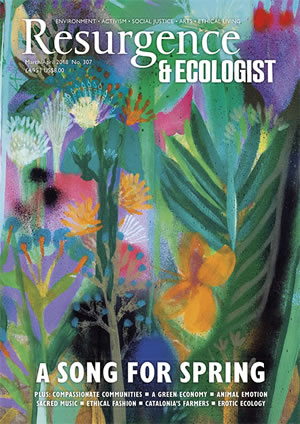Jairam Ramesh is an Indian politician, environmentalist and economist. He was his country’s minister of the environment between 2009 and 2011, and therefore has the experience and the knowledge to write this book.
As a politician, he understands the political and bureaucratic obstructions even a leader as powerful as Indira Gandhi had to face in defending ecologically sensitive areas, in preserving forests, in saving wildlife species, and in reducing air and water pollution. As an economist and a former minister, he understands the difficulties of weighing the need to develop India’s economy against conservation of the ecology.
He rightly says Gandhi’s biographers have not “done justice to her avatar as the ecology’s champion, or considered her passion for conservation”. So he has written what he calls “a cohesive ecological narrative”. It is chronological, and at the top of each chapter there is a summary of the events that occurred in Gandhi’s life during that period, to help the reader set the ecological narrative in a broader context.
The biography is based on the letters Gandhi wrote, as well as articles, speeches, and observations she made on files, along with memos, notes she scribbled, and messages she sent. Most of these writings are not part of official records or previously published material, and Ramesh says they were not easy to find.
“A naturalist”, maintains Ramesh, “is who Indira Gandhi really was, who she thought she was.” She wrote of her “inborn love of animals and the wild”. This love was enriched by her appreciation of India’s natural beauty, particularly that of the Himalayas. When she wanted to avoid the “tiring and burdensome” celebrations of her birthday she would be obliged to endure as prime minister, she escaped to spend two days in Darjeeling and two days in Sikkim. In a letter to a friend, she explained: “For me the mountains and the eternal snows are a revitalizing experience.”
She also had a love affair with trees. To demonstrate this, Ramesh quotes from a letter she wrote to help the Bombay-based organisation Friends of Trees. In it she said: “I have always regarded myself as a friend of trees and have experienced a sense of companionship with them – the easy-to-climb ones so dear to all active children seeking occasional haven from the adult world; the spreading ones which give protection from the glare and heat of the Indian sun; the flowering ones bursting into colourful bloom; the gnarled old ones, mute witnesses of history.”
Birdwatching was another of Gandhi’s passions. She described it as “one of the most absorbing and rewarding activities”. Her passion was aroused by reading a copy of The Book of Indian Birds by the renowned Indian ornithologist Salim Ali, which her father, Jawaharlal Nehru, sent her when he was in jail during the independence movement. Salim became one of her closest advisers, and in her last period in office she started referring all issues concerned with ecology to him.
Gandhi’s love of animals is illustrated by the look on her face as she cuddles a young tiger in the picture on the back cover of the book. Yet she denied herself the pleasure of visiting India’s wildlife sanctuaries because she feared that the security and other arrangements required for her visit would disturb the animals.
The material Ramesh has deployed demonstrates the attention Gandhi paid to ecological issues as prime minister. Her outstanding success was Project Tiger. She realised that in protecting the tiger she was protecting a whole ecosystem. During her time in office, measures were also taken to protect other species. She played a crucial role in banning the shooting of tigers and the lucrative export of skins and other parts of wildlife species. Her government passed laws for protecting wildlife and forests as well as preventing air and water pollution.
However, even a prime minister known as ‘the iron lady’ had to overcome opposition from within her own party, vested interests, and bureaucratic lethargy. Her own chief minister of Madhya Pradesh, home of some of India’s most magnificent wildlife, opposed the ban on tiger shooting, because it was a tourist attraction. On the eve of an election to the legislative assembly of the southern state of Kerala, Gandhi opposed her party leaders’ support for the plan for a hydroelectric project in the Happy Valley Forest. The Forest bureaucracy opposed Gandhi’s choice for the first head of Project Tiger because he was prone to disrupt their lethargic ways of working.
She had to overcome ministerial lethargy, too. In 1969, a year in which her leadership was seriously challenged, she reprimanded the powerful minister for forests and wildlife, Jagjivan Ram. When she wrote him a letter urging examination of certain proposals to stem the decline in wildlife, he sent what must have been a typical, non-committal bureaucratic reply. She noted on his letter, “This is a routine ministerial reply. The question needs to be gone into more deeply.”
Gandhi was always conscious that she was prime minister of a poor country. Her most famous slogan was “Gareebi hatao” – “Eradicate poverty”. But, as Ramesh points out, she knew she had to maintain a balance between the growth of the economy and ecology. That was often not easy to do; nor did she always come down on the side of ecology. Big dams, like the one required for the Silent Valley project, were particularly vexing. After discussions lasting four years, Gandhi abandoned that project in the month before she was assassinated.
Gandhi’s writings show what an ecologist prime minister can achieve. A few months before she died, she wrote: “For countless centuries Indian civilization has proclaimed the oneness of all creation and unity of life and non-life,” showing that her passion for ecology was firmly rooted in Indian culture. Jairam Ramesh’s book is timely because India currently has a prime minister who has different views on Indian culture from Indira Gandhi’s and is definitely on the side of the economists.






